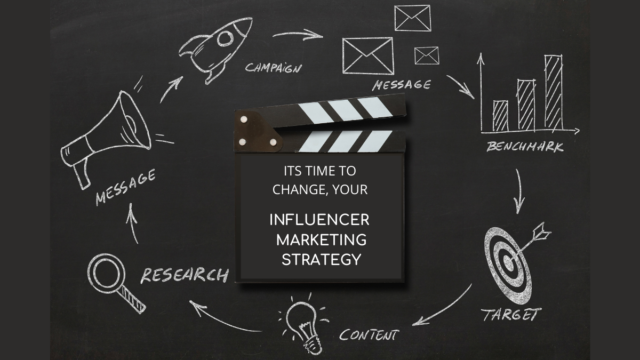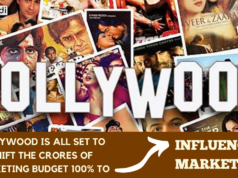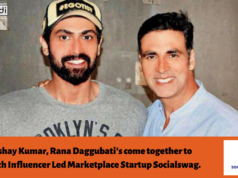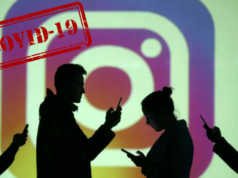Marketing teams all too often haven’t taken the time to consider what each potential influencer is really all about, and what kind of content each influencer’s followers are likely to respond to. For years, marketing and advertising agencies used social media scraping tools to index influencers into categories, which gives them the record of influencers with the highest followers. And the same data gets circulated to brands to consider the influencers for their campaigns. This kind of problem has plagued influencer marketing for years.
Much of this is because of the pace at which brands have jumped on the strategy due to sudden market evolution. “National advertisers are so enamored with influencer marketing that a full 75 percent of their companies currently employ the discipline and almost half (43 percent) are planning to increase their spending on it in the next 12 months,” the Association of National Advertisers reported last year.
But as time has changed companies in this space are taking the time to analyze their efforts – and looking to do influencer marketing in a way much more likely to bring a return on investment.
Influencer Marketing is the process of:
- Identifying individuals who create high-impact conversations, with your ideal target audience;
- Building relationships, by engaging and supporting these influencers to promote a brand’s products or services.
Evaluating influencers as consumers than ranking their followers
For some marketing campaigns, even your friends may be a better influencer than an “Instagram celebrity” with a million followers. The beauty of influencer marketing right now and going forward is that anyone who has built an online community of people who care about a particular objective or an issue can be the right fit.
Companies are finally starting to understand this. Rather than getting excited over big numbers of followers, they’re looking for people whose content, tone of voice, and interests relate with the messaging of the campaign – and whose followers, in turn, have shown a desire to engage around these topics.
Rather than tossing a giant amount of money at a single celebrity, distributing that spending to a series of people with smaller but active and engaged followings can be a much better use of a budget. This helps explain why 59% of brands are using influencers with 50 to 25,000 followers and 66% are using influencers with 25,001 to 100,000 followers. Fewer brands (44%) are using “macro-influencers” with large followings.
Influencers that genuinely believe in your product.
Another change that companies are starting to understand the importance of partnering with influencers who are legitimately excited about a product and a campaign.
In our research we questioned a few Instagrammers:
IM – Do you mind when influencers post sponsored content.
User – “No, it’s their job, how would they earn otherwise.”
IM -Does sponsor posts bother them?
User – Only when it seems that influencers are being dishonest.
The relationship that influencers have in their communities can be impactful, but only when followers sense that influencers mean what they’re saying.
Marketing tactics can also backfire:
Influencers as a marketing tactic can sometimes backfire, particularly with media-savvy millennials. As with any other approach, it’s really important to convey the authenticity of the story you’re telling.
Focus on the process of storytelling
Brands are coming to understand that a successful influencer marketing strategy isn’t about simply having someone say “I like this product, or just say I use this product”. Instead, the key is to empower influencers to tell stories in the style their followers have come to expect. Social media celebrities are vital to brand storytelling, and their thoughts and opinions may actually be more persuasive than the message coming straight from the brands themselves.
As businesses discover this, brands are giving influencers more freedom to develop creative stories that work for a campaign. Some are even supporting shoppable brand storytelling, so if you like something you see in a video you can easily click to buy it.












Thank you for your sharing. I am worried that I lack creative ideas. It is your article that makes me full of hope. Thank you. But, I have a question, can you help me?
wj9x2t
I’m not that much of a internet reader to be honest but your sites really nice, keep it up! I’ll go ahead and bookmark your website to come back later on. Many thanks
I like what you guys are up too. Such smart work and reporting! Carry on the superb works guys I’ve incorporated you guys to my blogroll. I think it will improve the value of my web site 🙂
I am very happy to read this. This is the kind of manual that needs to be given and not the accidental misinformation that’s at the other blogs. Appreciate your sharing this greatest doc.
obviously like your web-site however you have to test the spelling on several of your posts. Several of them are rife with spelling problems and I find it very troublesome to inform the reality on the other hand I’ll definitely come again again.
I am not real great with English but I line up this really easy to read .
маркетплейс аккаунтов биржа аккаунтов
магазин аккаунтов социальных сетей продажа аккаунтов
гарантия при продаже аккаунтов https://magazin-akkauntov-online.ru/
продажа аккаунтов соцсетей маркетплейс аккаунтов
маркетплейс аккаунтов маркетплейс аккаунтов
магазин аккаунтов продажа аккаунтов соцсетей
перепродажа аккаунтов https://pokupka-akkauntov-online.ru/
Secure Account Purchasing Platform Buy accounts
Buy Account Account marketplace
Sell Pre-made Account Accounts marketplace
Website for Buying Accounts Database of Accounts for Sale
Accounts market Purchase Ready-Made Accounts
Account Buying Service Accounts marketplace
Sell Account Verified Accounts for Sale
Account Trading Account Market
buy accounts https://bestaccountsstore.com
sell pre-made account https://accountsmarketplaceonline.com/
Thank you for the auspicious writeup. It in fact used to be a enjoyment account it. Glance complicated to far delivered agreeable from you! However, how could we keep up a correspondence?
buy pre-made account buy account
online account store account buying platform
sell accounts database of accounts for sale
database of accounts for sale online account store
account acquisition verified accounts for sale
account market purchase ready-made accounts
find accounts for sale verified accounts for sale
marketplace for ready-made accounts secure account purchasing platform
profitable account sales account selling platform
account trading account store
account market account buying platform
sell pre-made account website for buying accounts
secure account sales buy account
gaming account marketplace account market
account trading platform accounts market
account store account-buy.org
account market social media account marketplace
account purchase account market
marketplace for ready-made accounts website for buying accounts
Very interesting information!Perfect just what I was looking for!
account purchase account trading
ready-made accounts for sale sell pre-made account
find accounts for sale account store
ready-made accounts for sale account market
ready-made accounts for sale https://accounts-offer.org/
website for buying accounts https://accounts-marketplace.xyz
sell pre-made account https://buy-best-accounts.org
buy account https://social-accounts-marketplaces.live
account exchange service account marketplace
online account store https://social-accounts-marketplace.xyz
secure account purchasing platform https://buy-accounts-shop.pro/
profitable account sales https://buy-accounts.live
account trading platform https://accounts-marketplace.online
account exchange account marketplace
Can you be more specific about the content of your article? After reading it, I still have some doubts. Hope you can help me.
sell pre-made account https://accounts-marketplace-best.pro
Hello. impressive job. I did not anticipate this. This is a remarkable story. Thanks!
маркетплейс аккаунтов rynok-akkauntov.top
биржа аккаунтов https://kupit-akkaunt.xyz
маркетплейс аккаунтов https://akkaunt-magazin.online
биржа аккаунтов akkaunty-market.live
маркетплейс аккаунтов https://kupit-akkaunty-market.xyz
маркетплейс аккаунтов соцсетей https://online-akkaunty-magazin.xyz
биржа аккаунтов akkaunty-dlya-prodazhi.pro
маркетплейс аккаунтов соцсетей kupit-akkaunt.online
facebook ad account buy fb account for sale
facebook ads account buy https://buy-ad-accounts.click
buy a facebook ad account https://buy-ad-account.top
buy fb ad account buy facebook profiles
facebook ad accounts for sale facebook ad account buy
facebook ads account for sale buy fb ad account
buy facebook advertising https://ad-account-for-sale.top
Этот увлекательный информационный материал подарит вам массу новых знаний и ярких эмоций. Мы собрали для вас интересные факты и сведения, которые обогатят ваш опыт. Откройте для себя увлекательный мир информации и насладитесь процессом изучения!
Получить дополнительные сведения – https://medalkoblog.ru/
buy fb account buy facebook profile
google ads agency account buy https://buy-ads-account.top
buy facebook accounts for ads https://buy-accounts.click
google ads reseller buy verified google ads accounts
buy aged google ads account https://ads-account-buy.work
buy google ad account buy google agency account
google ads agency account buy https://buy-account-ads.work/
buy aged google ads account https://sell-ads-account.click
old google ads account for sale https://ads-agency-account-buy.click
buy facebook business account https://buy-business-manager.org
buy old google ads account https://buy-verified-ads-account.work
business manager for sale https://buy-bm-account.org/
buy facebook verified business account buy-verified-business-manager-account.org
facebook business manager buy https://buy-verified-business-manager.org/
buy facebook bm account https://buy-business-manager-acc.org
verified facebook business manager for sale business-manager-for-sale.org
facebook business manager buy https://buy-business-manager-verified.org/
buy facebook business account https://buy-bm.org
buy fb bm buy verified facebook business manager account
buy facebook business manager accounts https://buy-business-manager-accounts.org
tiktok ads agency account https://buy-tiktok-ads-account.org
buy tiktok ads accounts https://tiktok-ads-account-buy.org
tiktok agency account for sale https://tiktok-agency-account-for-sale.org
buy tiktok ads accounts https://buy-tiktok-ad-account.org
tiktok ad accounts tiktok ads account buy
buy tiktok ad account https://tiktok-ads-agency-account.org
buy tiktok ad account https://buy-tiktok-ads.org
fZunp EvNdYdvY YwRU
yigcpp
Excellent post. I was checking constantly this blog and I’m impressed! Very helpful info specifically the last part 🙂 I care for such info much. I was looking for this particular information for a very long time. Thank you and best of luck.
Thanks for some other informative site. The place else could I get that kind of information written in such a perfect approach? I have a project that I am simply now working on, and I’ve been on the look out for such information.
¡Saludos, estrategas del juego !
Casinos extranjeros para juegos de cartas online – https://www.casinosextranjerosenespana.es/ п»їcasinos online extranjeros
¡Que vivas increíbles instantes inolvidables !
¡Hola, maestros del juego !
Casino fuera de EspaГ±a sin KYC – п»їп»їhttps://casinoonlinefueradeespanol.xyz/ casinoonlinefueradeespanol.xyz
¡Que disfrutes de asombrosas tiradas afortunadas !
¡Saludos, seguidores del desafío !
Juegos clГЎsicos en casinos online extranjeros – https://www.casinosextranjero.es/ mejores casinos online extranjeros
¡Que vivas increíbles recompensas sorprendentes !
¡Hola, estrategas del azar !
Casino online extranjero con crupier profesional – п»їhttps://casinoextranjero.es/ casinos extranjeros
¡Que vivas recompensas fascinantes !
¡Bienvenidos, entusiastas del azar !
Casino fuera de EspaГ±a sin comprometer datos – https://www.casinoporfuera.guru/ casino online fuera de espaГ±a
¡Que disfrutes de maravillosas botes impresionantes!
¡Hola, seguidores de la aventura !
casinosextranjerosdeespana.es – experiencia mГіvil – https://casinosextranjerosdeespana.es/# casino online extranjero
¡Que vivas increíbles recompensas extraordinarias !
I think other site proprietors should take this web site as an model, very clean and great user genial style and design, let alone the content. You’re an expert in this topic!
¡Bienvenidos, entusiastas de la emoción !
Casino por fuera con tragaperras de video populares – п»їhttps://casinofueraespanol.xyz/ casinos online fuera de espaГ±a
¡Que vivas increíbles jugadas magistrales !
Este site é realmente fantástico. Sempre que acesso eu encontro novidades Você também vai querer acessar o nosso site e descobrir detalhes! informaçõesexclusivas. Venha descobrir mais agora! 🙂
?Hola, fanaticos del entretenimiento !
Casino online fuera de EspaГ±a con RTP del 98% – п»їhttps://casinosonlinefueradeespanol.xyz/ casinos online fuera de espaГ±a
?Que disfrutes de asombrosas momentos irrepetibles !
¡Saludos, apostadores habilidosos !
Casinos online extranjeros con transmisiones en vivo – https://www.casinoextranjerosdeespana.es/ mejores casinos online extranjeros
¡Que experimentes maravillosas momentos irrepetibles !
Hello keepers of pristine spaces !
Best Air Purifiers for Smoke – Best Under $500 – https://bestairpurifierforcigarettesmoke.guru/# air purifier for smoke smell
May you experience remarkable exceptional air purity !
¡Hola, seguidores del entretenimiento !
Casinos sin licencia en EspaГ±a para jugadores frecuentes – https://casinosinlicenciaespana.xyz/# casino sin licencia
¡Que vivas increíbles jackpots impresionantes!
Good site! I truly love how it is simple on my eyes and the data are well written. I’m wondering how I might be notified when a new post has been made. I have subscribed to your feed which must do the trick! Have a great day!
¡Hola, aventureros de sensaciones intensas !
Casino sin registro con atenciГіn 24/7 – https://www.casinosonlinesinlicencia.es/ casino sin licencia espaГ±ola
¡Que vivas increíbles jackpots impresionantes!
¡Saludos, fanáticos del desafío !
Casino bono de bienvenida fГЎcil obtener – http://bono.sindepositoespana.guru/ bonos bienvenida casino
¡Que disfrutes de asombrosas premios excepcionales !